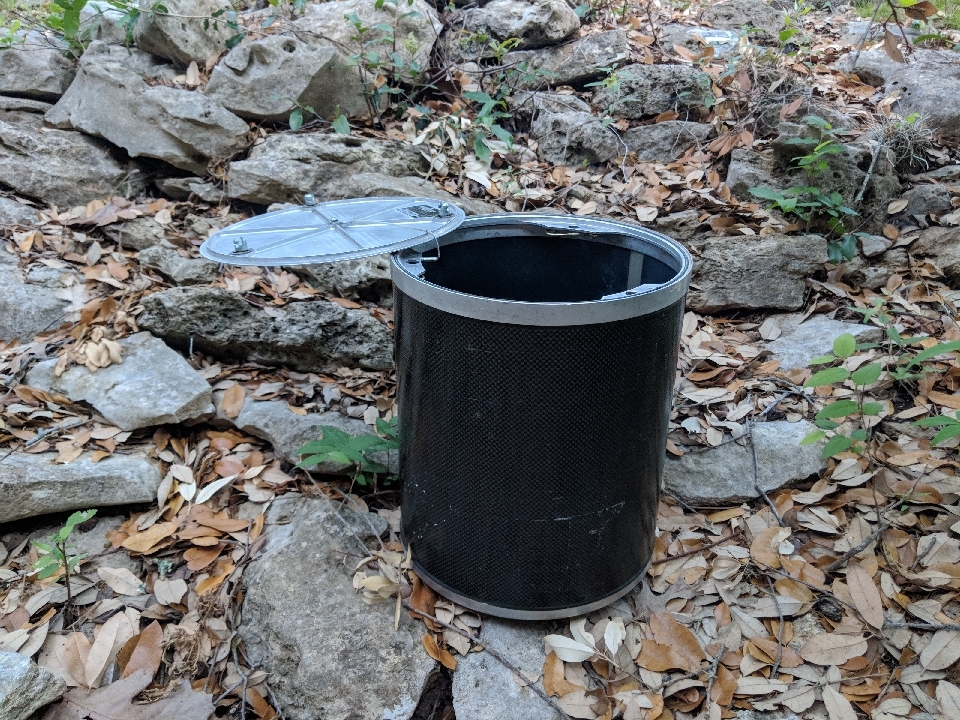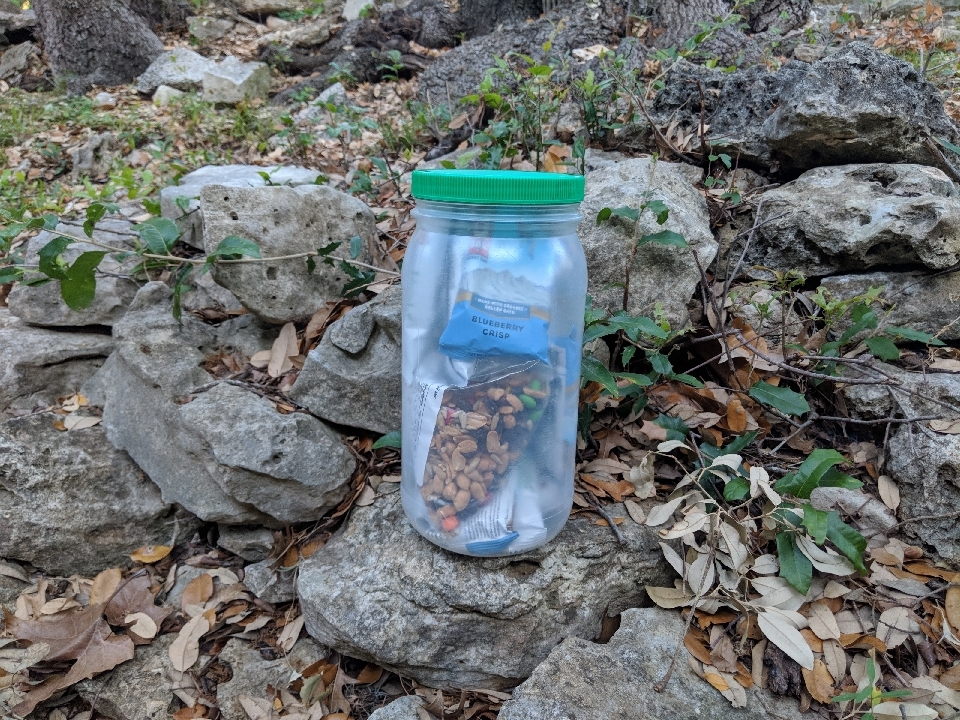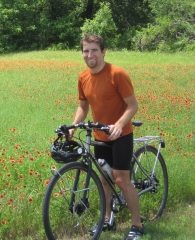Food Prep
As I've been looking ahead at likely resupply points, it's noticeable that not only are they far apart, they're well off-trail. Hitchhiking into and out of town, in addition to grocery shopping, would probably take half a day. So when you figure that 34 km/day is the average, you have to keep in mind there will be days when you only manage half that, because several hours will be taken up trying to get to a town that's 30 minutes away by car.
One of the most notorious stretches of the Appalachian Trail is the famed "100-Mile Wilderness," so named because you hike 100 miles without crossing a road...except for the four or five that you cross. But! They're so rarely used that you won’t see a car and you’ll have to hike 100 miles without resupplying!...actually you’ll see a few cars, and they’ll happily let you hitchhike if you ask.
“It's haahd!!! I hadda go six days widoud usin’ a hay-eh dri-yuh oo-wah drinkin’ a seven-dollah cuppa coo-wof-ee!!” (bad imitation of northeastern accent, sadly kind of accurate attitude).
On the PCT, it appears the 100-Mile Wilderness is the norm. And those resupply points in between are glorified convenience stores, unless you plan to hitchhike into larger cities up to an hour (by car) off-trail. When on a tour or hike, I prefer staying on-trail as much as possible, so I'm going to pay out the nose, even by California standards, and eat a steady diet of vegan granola bars. I don’t like hitching into towns, but wouldn’t mind if the trail itself passed through one more often.
On the AT, most people don't bother mailing themselves resupply boxes, but on the PCT, it's considered a necessity. Not a few times, a lot. Among successful thru-hikers, the average number of mail drops is ten. TEN!!! On the AT, I used...zero.
For this hike, I'm only planning one. It's primarily the northern half of the trail, especially Washington, that gets remote to the point that you couldn't buy food even if you wanted to. So like everyone else, I'm sending a resupply box to Kennedy Meadows. Or more accurately, a resupply can.
Kennedy Meadows is the most popular place to send a resupply package, for three reasons:
- The nearest resupply points are 80 km south and 277 km north, and both of those are significantly off-trail. The resupply to the south requires a bus ride, and the one to the north requires a ferry!
- It’s where the desert ends and the Sierra begins, so a lot of people want to swap gear for warmer clothes and sleeping bags. Some people also mail themselves mountaineering equipment, like crampons or an ice axe.
- Starting not long after Kennedy Meadows, bear cans are required.
What’s a bear can, you may ask? It’s a big lock-able cylinder that bears can’t open, nor smell through. The idea is you put your food in there and bears can’t get to it. Bears aren’t interested in eating humans; they’re interested in eating humans’ food. Your granola bars, your peanut butter, your trail mix, etc. Bears don’t usually eat large animals, but the food hikers carry is right up their alley. But if they have to hurt you to get it, or if you startle them while they’re snooping through your stuff, things could go badly.
Once bears get the idea that humans mean food, it doesn’t end well for the bear either. Bears that become dependent on humans for food lose their ability to fend for themselves, and if a bear gets in the habit of confronting humans for food, it’s tracked and killed in the name of public safety. Bear canisters are required not only for the safety of humans, but for the safety of bears.

Bear cans are heavy (two pounds or more), and hikers go to great lengths to shave weight off their pack. Some will spend an extra $100 for a sleeping bag that’s 100 grams lighter, or saw the handle off their toothbrush to save half an ounce. So as you can imagine, people try not to carry bear cans except when they absolutely have to. Hence, nearly everyone mails their bear can to Kennedy Meadows, and mails it home as soon as they’re out of bear country. I’m doing the same, after filling it with food and an extra layer of clothing.
For the desert section of the trail, I spent a lot of time pondering what would be the best way to carry water. The general consensus is you need to be able to carry at least five liters of water, six is probably better to be on the safe side. As a smaller guy, I could probably err closer to five, but 5.5 or 6 wouldn’t be a terrible idea. How would I choose to fit that all in my pack though? Bottles? Bladder? A gigantic jug?
Bladders have a few advantages: they can hold a lot (usually 2-3 L), and being soft, they’re usually lightweight when compared to their capacity. Also, you can attach a hose to one end and have the end of it near your mouth, so when you’re thirsty, you barely move to take a sip, rather than stopping and perhaps taking off your pack to get to your water bottle.
What I don’t like about bladders is their durability, or lack thereof. I’ve had one tear during the middle of the day (in July, in Mexico). If that happens at the wrong time, it could be life-threatening. Also, one of my bladders is just as heavy as a few bottles would be, so there goes one of the main advantages. The other bladder I have is much lighter in weight, but the opening is too narrow to put ice into it (this doesn’t come up often, but when it does, it’s so nice). And finally...bladders are simply unwieldy and difficult to fill up in a sink.
I have one unusually large water bottle (1.5 L), and a large plastic jug (2 L). Both are made of durable BPA-free plastic (think Nalgene), which I like, but they’re fairly heavy, even empty. And unlike bladders, they aren’t flexible and don’t collapse when empty, so they take up a lot of space in your pack.
I finally had a moment of clarity when tossing out an empty jar of peanut butter. Something like this could work pretty well. It seals up watertight, and you could use this to eat out of, too. I promptly tried microwaving some instant rice in the peanut butter jar. That didn’t end well. OK, no microwave, and no dishwasher either. So this wouldn’t work as a water bottle/eating bowl. And it’s too small to be my main water bottle.
Then I saw a gigantic pickle jar at the grocery store. Plastic, with a screw-on lid. Basically a giant peanut butter jar.
Wait a minute…

2.5 L, water jug by day, food storage by night. I’m a genius! It certainly won’t replace a legitimate bear can, but it’ll provide a little extra peace of mind against rodents and other critters, at least compared to putting your food in a bag (the most common practice). And best of all, its weight-to-volume ratio is about as good as, if not better than, any other options I’ve tried.
My other water containers: collapsible bottle (0.5 L), two disposable plastic bottles (1 L each), screw-top plasticware bowl (0.65 L, doubles as eating bowl), for a total of 5.65 L. When I get to Kennedy Meadows, I’ll ditch everything but the bowl, collapsible bottle, and one of the disposable bottles.
Stay tuned. Description of the rest of my gear to follow…



 June
June

